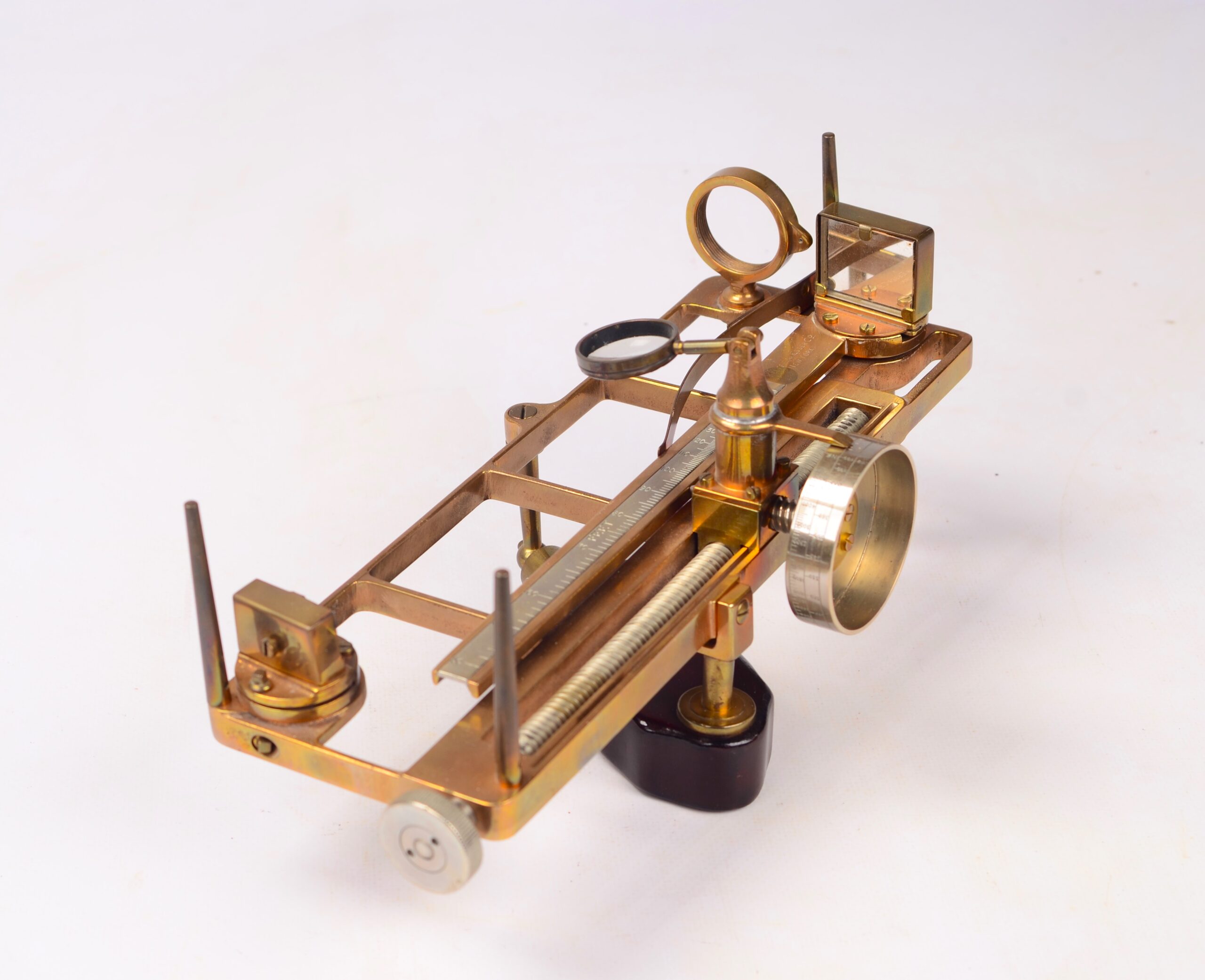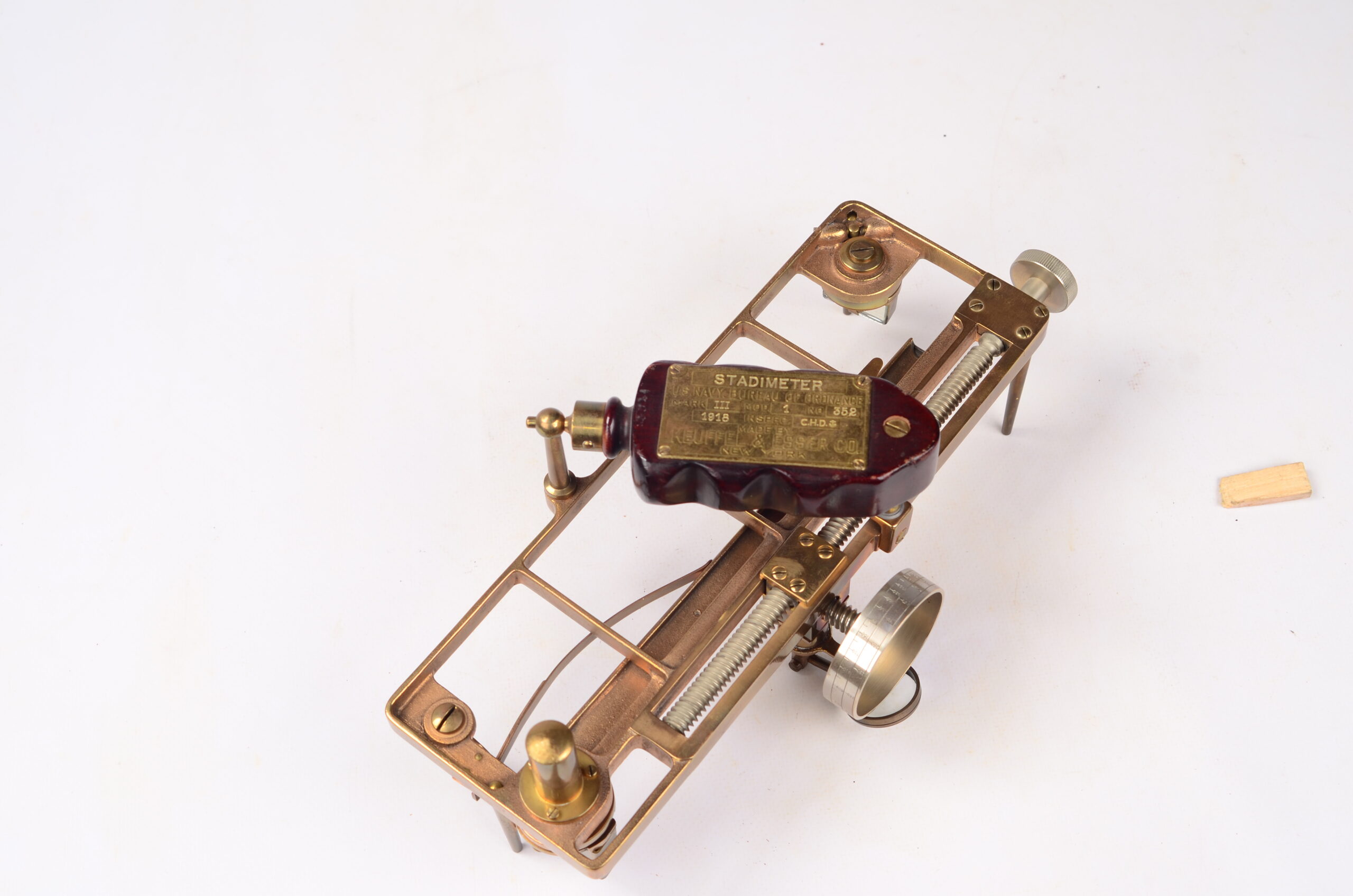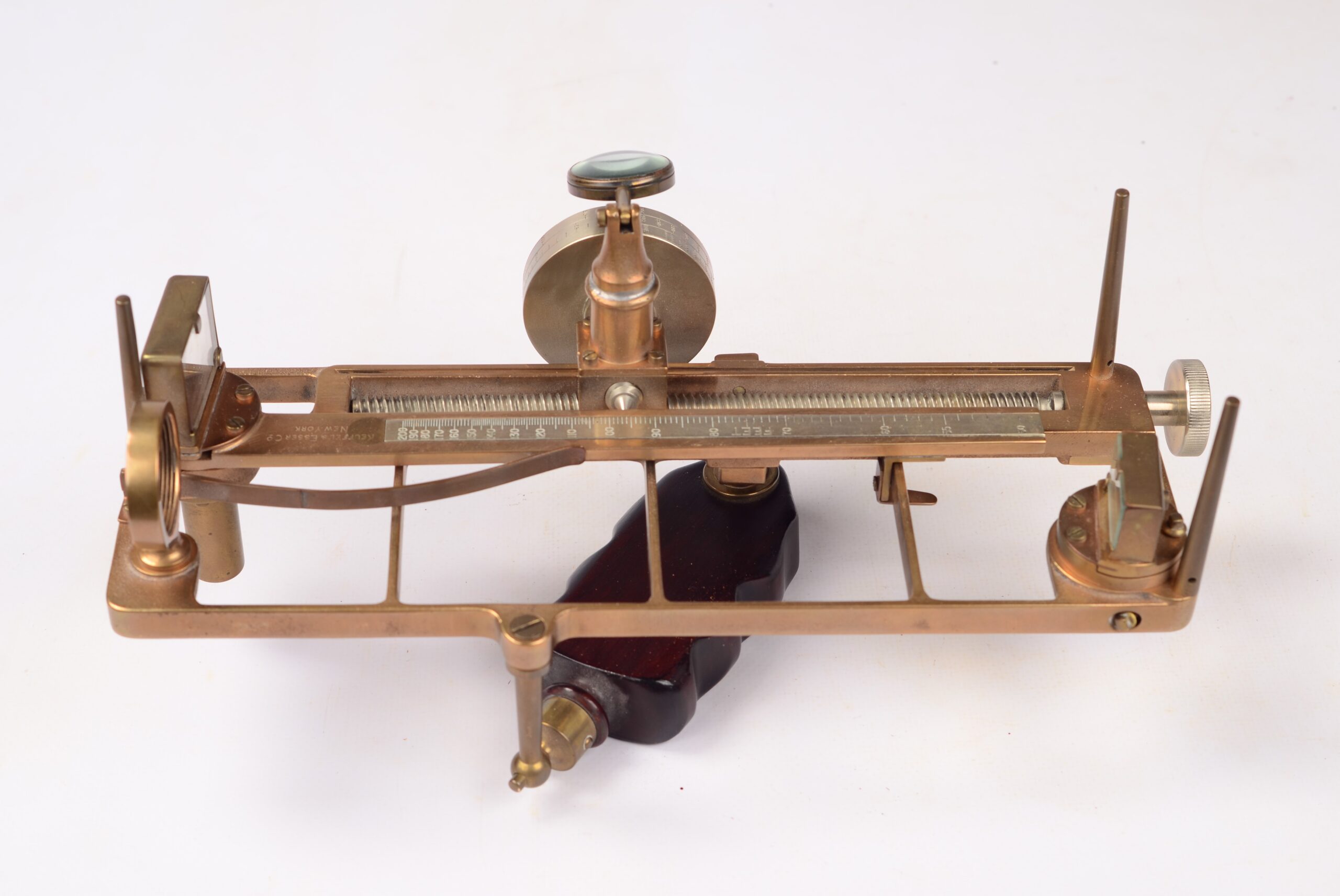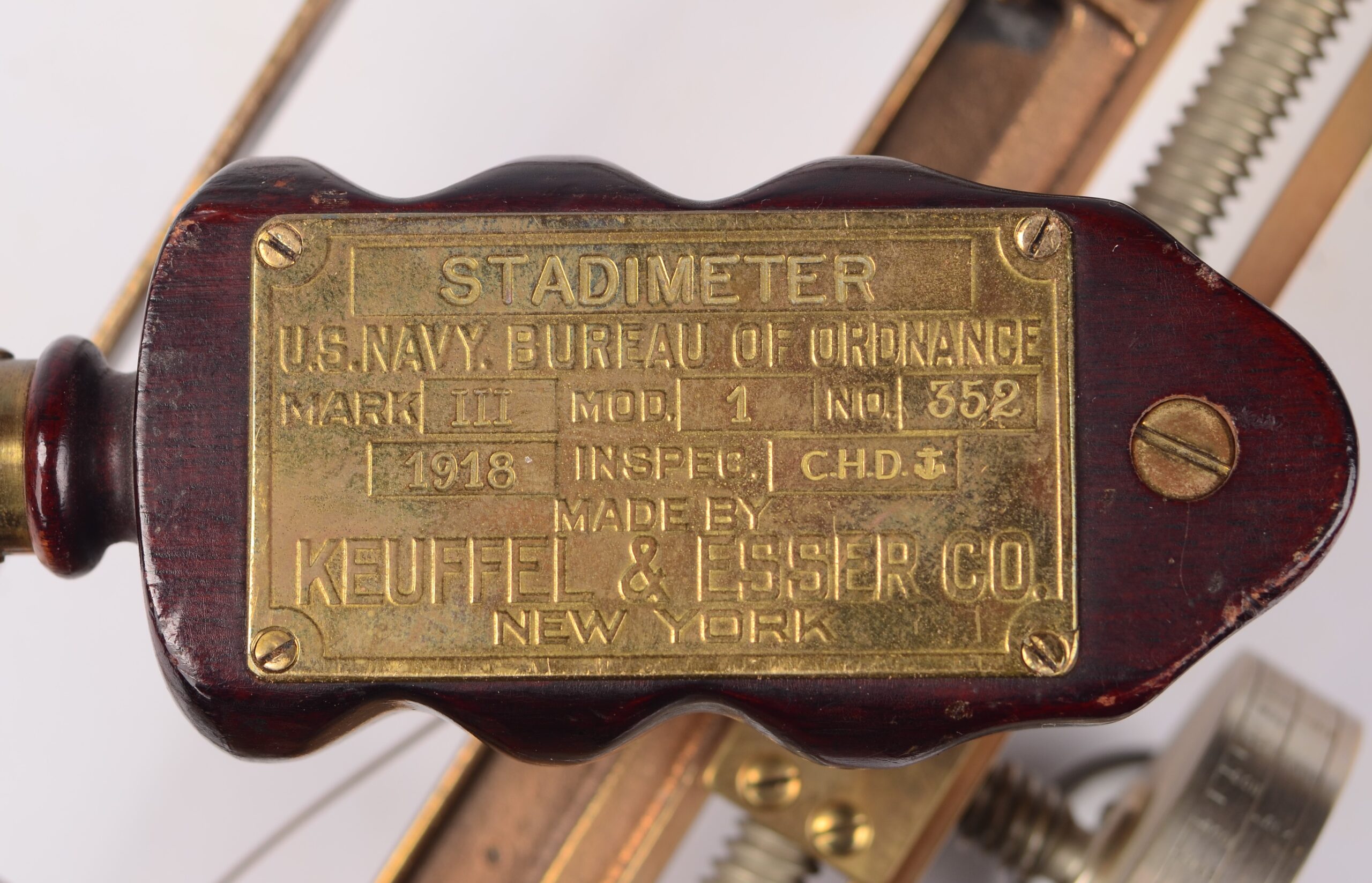Early brass Stadimeter, WWI era – Keuffel & Esser Co, New York, 1918
Early stadimeter made of brass in full working order. It’s complete with box of mahogany and adjustment instructions in the lid. That the instrument is made of untreated brass, the case is made of mahogany and the no. 352, indicates that it is a very early instrument. Felt has not yet been used.
The stadimeter or optical range finder, was developed in the 1890’s by Bradley Allen Fiske and designed to determine the distance to other warships. Like a sextant, the stadimeter uses a system of mirrors to measure the angular distance of two ends of a distant object (e.g. height of a light house, length or height of a vessel). The difference with the sextant is that the user can set a reference scale to a known dimension of that distant object. The stadimeter allows the user bring the two ends of the known object into coincidence, after which the distance to the object can be read from its drum micrometer.
Catalog: NM.6-52
Date: 1918
HWL: 12x27x13 cm
HWL case: 16x32x17 cm
Origin: USA
Condition: in good and working condition, wear consistent with age and use
Signed:
STADIMETER
U.S. NAVY. BUREAU OF ORDNANCE
Mark III, MOD 1, ND. 352
1918 INSPEC. C.H.D. (ANCRE)
MADE BY KEUFFEL & ESSER CO.
NEW YORK











